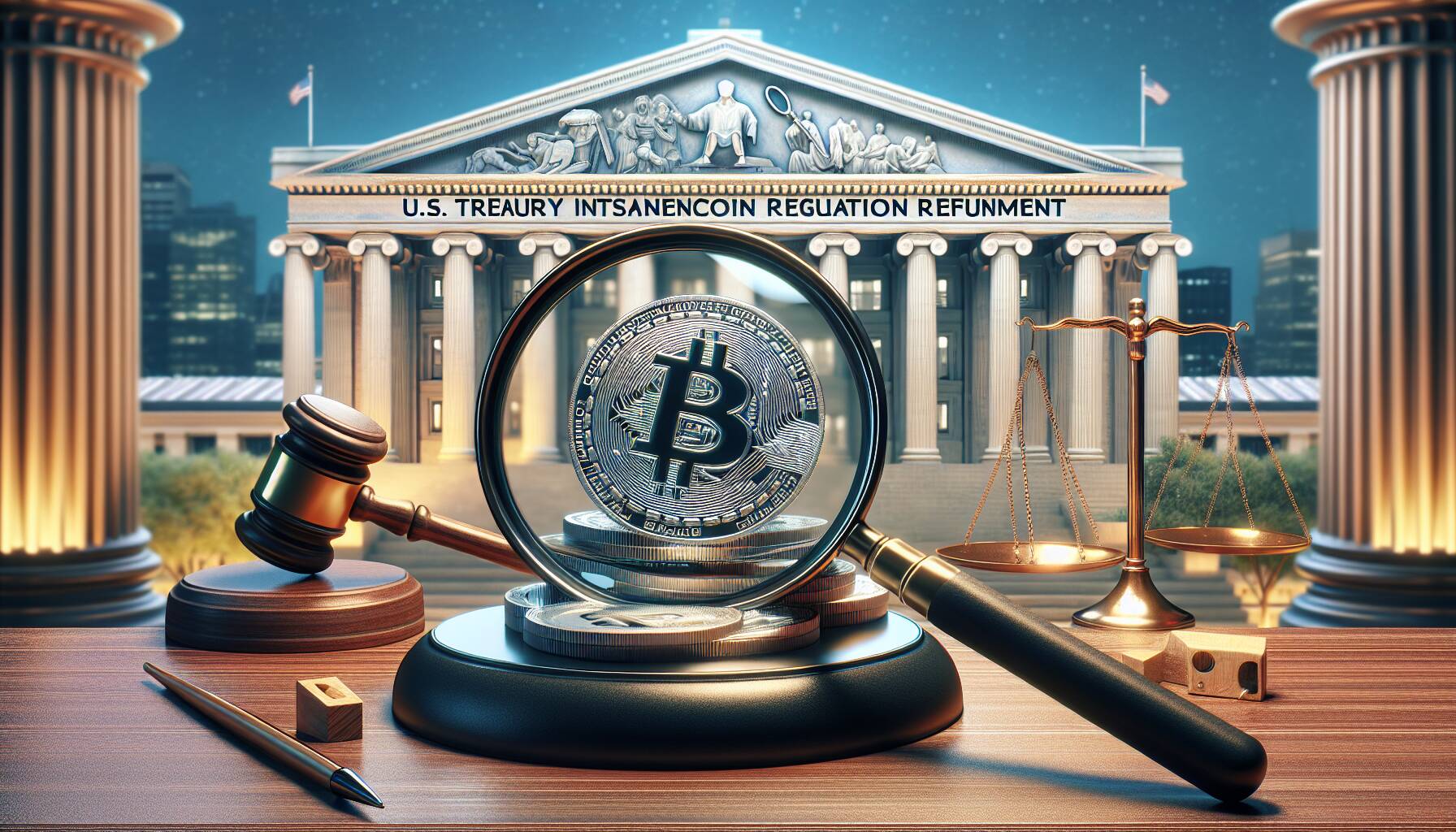The U.S. Treasury Department has embarked on an important initiative to refine the recently introduced stablecoin regulations under the Guiding and Establishing National Innovation for U.S. Stablecoins Act, commonly known as the GENIUS Act. Announced on Friday, this effort involves an “advance notice of proposed rulemaking,” which allows for a preliminary gathering of insights before formal regulations are established. This regulatory framework aims to address several critical aspects concerning stablecoin issuers, including compliance with sanctions, anti-money laundering (AML) measures, and the coordination between state and federal oversight.
The public comment period is set to remain open for one month, closing on October 20, during which both industry stakeholders and the general public can submit their views on key issues raised, such as the necessity for additional clarity on reserve asset requirements and comparisons with international regulatory frameworks. This process not only aims to enhance the regulatory landscape in the U.S. but also to ensure that the evolving stablecoin sector is safeguarded against potential illicit activities.
“The GENIUS Act is the first significant legislative step for U.S. crypto, marking a pivotal moment for the industry and setting the stage for more comprehensive regulation,” noted financial analysts.
This push for regulatory clarity comes in the wake of renewed efforts from Congress, particularly bipartisan discussions surrounding further legislation to establish a more robust market structure for digital assets. The Digital Asset Market Clarity Act has already passed in the House, highlighting the growing momentum for establishing favorable conditions for the U.S. cryptocurrency landscape. The urgency behind these developments is reflected in remarks from the Trump administration and federal financial regulators, emphasizing the goal of making the U.S. a global hub for cryptocurrency.

The U.S. Treasury’s Move on Stablecoin Regulation
Key points regarding the U.S. Treasury Department’s efforts on stablecoin regulations and their implications:
- Advance Notice of Proposed Rulemaking
- Opened a narrow comment window to gather public input on stablecoin regulations.
- Deadline for comments is October 20.
- Focus on the GENIUS Act
- Establishes regulatory framework for stablecoins.
- Covers issues like issuer prohibitions, sanctions obligations, and anti-money laundering compliance.
- Impact on Crypto Businesses
- Public and industry inputs will shape the regulations affecting operational conditions and compliance costs.
- Potential clarification needed on reserve asset requirements.
- Collaboration with Congress
- Discussion ongoing between Senate and House for broader legislation on crypto regulations.
- Focus on balancing state and federal oversight.
- Market Dynamics
- JP Morgan notes the need for market expansion to avoid stablecoin competition cannibalization.
- Legislative clarity may influence the stablecoin sector’s growth and stability.
This regulatory framework could significantly impact readers by shaping the rules of engagement in the cryptocurrency space, affecting investment strategies and compliance considerations.
U.S. Treasury Department’s Push for Stablecoin Regulation: Insights and Implications
The recent initiative by the U.S. Treasury Department, aimed at formalizing regulations under the newly passed GENIUS Act, finds itself amidst a dynamic landscape of cryptocurrency legislation. Compared to global counterparts, the U.S. approach appears methodical but also subjects the burgeoning stablecoin market to a complicated web of compliance requirements. This initiative could position the U.S. at the forefront of stablecoin regulation, potentially attracting innovations and investments. However, the short comment period, set to close on October 20, raises concerns about the inclusivity of stakeholder perspectives, which might stifle input from smaller crypto entities and startups.
Competitive Advantages: The GENIUS Act represents a systematic effort by the U.S. government to clarify regulatory expectations across several domains such as taxes, anti-money laundering protocols, and sanctions compliance. This clarity is essential for fostering trust among investors and businesses alike. Moreover, by soliciting industry feedback, the Treasury runs the risk of missing out on crucial insights that could inform a more balanced regulatory framework.
Disadvantages: While the intention to streamline oversight is commendable, the tight timeline for public comments could jeopardize the efficacy of this regulation. Current players in the crypto space—especially new and smaller companies—might struggle to adapt to rapidly evolving rules, potentially leading to unintended consequences such as decreased competition. Furthermore, the emphasis on compliance could hinder innovation, especially if firms allocate significant resources toward meeting regulatory requirements instead of developing new products.
Impact on Stakeholders: This regulatory push is likely to benefit established financial institutions that possess the infrastructure to navigate compliance burdens effectively. However, it poses challenges for upstart innovations that could be stifled under stringent regulations, threatening the competitive landscape of the industry. As the rules evolve, it will be critical for all parties involved to remain agile, contributing to the discussion in ways that ensure both compliance and innovation thrive.















